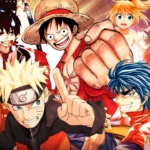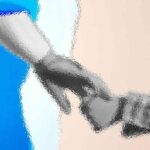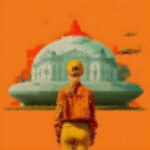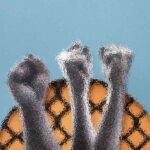Introduction to the Bumped Things NYT Crossword
If you’ve ever tackled the New York Times crossword puzzle, you know that it’s not just a test of vocabulary; it’s a journey through wit and cleverness. Among the many themes and clues, one intriguing aspect stands out: bumped things. These quirky entries add an extra layer of challenge and fun to your solving experience. But what exactly are bumped things, and why do they hold such significance in this beloved puzzle? Join us as we dive into the fascinating world of bumped things in the NYT crossword, exploring their history, usage, and tips for mastering them like a pro. Get ready to sharpen your pencil (or fingers) because this is going to be an engaging exploration into one of crosswords’ most delightful features!
History and Evolution of the NYT Crossword Puzzle
The New York Times Crossword Puzzle began its journey in 1942, created by Arthur Wynne. Initially published on a Sunday, it quickly gained traction among readers.
Over the years, the puzzle evolved significantly. The original format featured simple clues and straightforward answers. As time progressed, constructors infused creativity into their work, introducing intricate themes and clever wordplay.
By the late 20th century, puzzles became more complex. This shift attracted a dedicated audience eager for challenging content. The NYT Crosswords also adapted to modern culture and trends.
In 2005, Will Shortz took over as editor and further elevated the puzzle’s status. He encouraged new voices and diverse themes while maintaining high standards of quality.
Today’s NYT Crossword reflects not only language but also current events and pop culture references. It continues to engage solvers with innovative approaches that keep them coming back for more.
How Bumped Things are Used in Crosswords
Bumped things in crossword puzzles refer to clues or answers that have been altered or shifted from their original positions. This clever technique adds a layer of complexity, making solvers think outside the box.
In many cases, these “bumped” clues might lead you to an unexpected answer. For instance, if the clue suggests “trapped animal,” the actual answer could be something completely different due to the bumping mechanism.
Crossword creators use this method not just for challenge but also for entertainment. It allows them to play with words and meanings while keeping players engaged.
Recognizing how bumped things work can significantly enhance your solving strategy. The more familiar you are with this concept, the easier it becomes to tackle those tricky sections of any NYT crossword puzzle filled with mysterious bumps.
The Importance of Familiarizing Yourself with Bumped Things
Familiarizing yourself with bumped things is essential for any crossword enthusiast. These unique clues often appear unexpectedly, adding an extra layer of challenge to puzzles.
When you know what kinds of items or concepts are considered “bumped,” you can improve your solving strategies. Recognizing patterns helps in quickly deciphering those tricky clues that might otherwise stump you.
Bumped things often relate to pop culture, historical events, or even everyday objects. The more you explore these associations, the better prepared you’ll be when faced with a tough clue.
Additionally, becoming knowledgeable about bumped things allows for richer puzzle-solving experiences. It transforms each session into not just a test of skill but also an opportunity to learn and engage with new topics and ideas. This familiarity opens doors to deeper connections within the world of crosswords.
Tips for Solving Crosswords with Bumped Things
When tackling bumped things in the NYT crossword, start by scanning for clues that suggest a deviation from the norm. These hints often indicate that letters are altered or missing.
Next, try to think outside the box. Bumped things can involve puns or wordplay, so keep your mind open to different interpretations of clues.
Utilizing a pencil can be beneficial. This allows you to make quick changes without committing too soon if you’re uncertain about an answer.
Familiarize yourself with common phrases and terms used in crosswords that incorporate bumps. The more you know, the easier it becomes to spot patterns and connections.
Don’t hesitate to take breaks when feeling stuck. Sometimes stepping away for a moment provides clarity upon returning with fresh eyes.
Commonly Used Bumped Things in NYT Crosswords
Bumped things in NYT crosswords often refer to items or concepts that pop up frequently. These can be words with double letters, unique spellings, or quirky phrases that catch solvers off guard.
Take “EYE” for example. It’s a three-letter noun you might encounter more than once. Its versatility allows it to fit into various clues seamlessly.
Another common entry is “ESS.” This abbreviation for the letter S appears regularly and can stump newcomers who aren’t familiar with crossword lingo.
Then there’s “REO,” which stands for real estate owned property—a term that’s not just useful but also clever when it shows up unexpectedly in a grid.
Don’t overlook simple yet effective words like “ATE.” The past tense of eat has an undeniable way of making its presence known in many puzzles.
Conclusion: The Fun and Challenge of the Bumped Things NYT Crossword
The Bumped Things NYT Crossword offers a unique blend of challenge and enjoyment. As you delve into the world of crossword puzzles, these tricky clues can add an extra layer of excitement to your solving experience. Engaging with bumped things not only improves your puzzle-solving skills but also broadens your knowledge in various subjects.
Crossword enthusiasts know that each bump represents a fascinating tidbit or concept waiting to be uncovered. With regular practice, even the most complex bumps become familiar friends.
Embracing this aspect of the NYT Crossword elevates the entire experience, making it more interactive and rewarding. Whether you’re a seasoned solver or just starting out, exploring bumped things is sure to keep you entertained while sharpening your mind along the way. Happy puzzling!


















